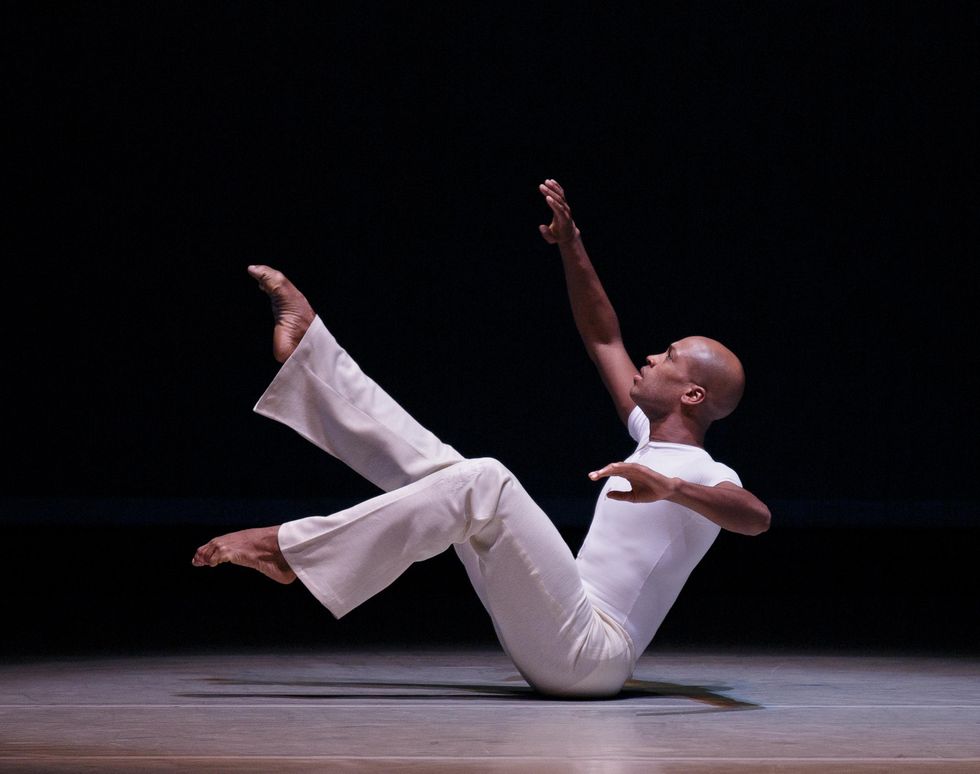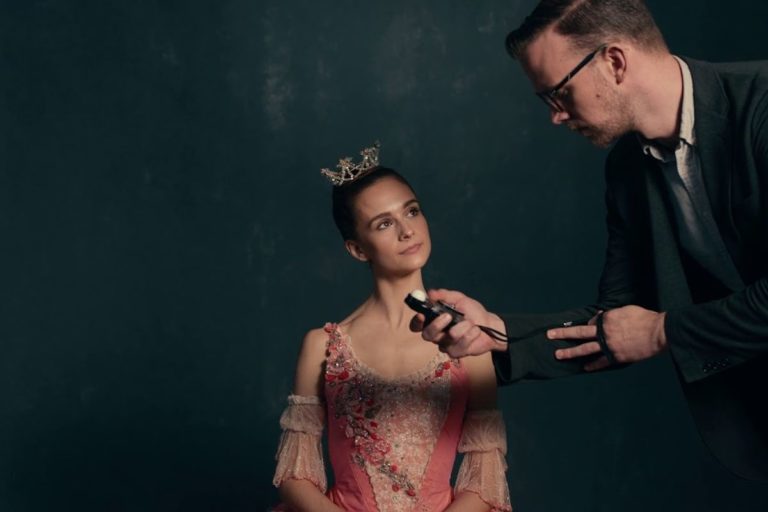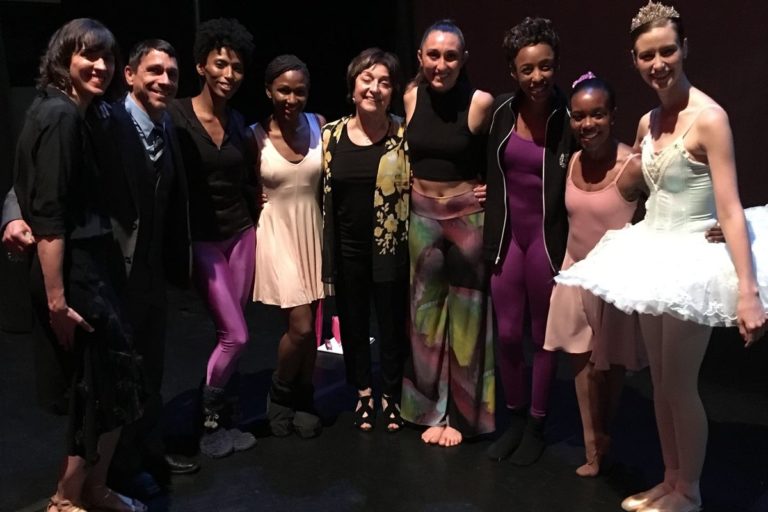
When Antonio and Kirven Douthit-Boyd took their final bows with the Alvin Ailey American Dance Theater (AAADT) in August 2015, they knew exactly what their next step would be. Within two weeks they moved to St. Louis, Missouri, Antonio’s hometown, to become co-artistic directors of the dance program at Center of Creative Arts (COCA), the same performing arts center where Antonio had enrolled as a teenager. Their job involves guiding aspiring professional dancers and directing and choreographing performances for both the school and the performance stage.
As world-class performers, African Americans and committed life partners, the two men exemplify the uplifting spirit and passion of a life dedicated to the daily rigor of life in the dance studio. “You never arrive,” says Antonio, 35, who joined AAADT in 2004. “I learned that from Arthur Mitchell [founder and director of Dance Theatre of Harlem]. You want to be a student throughout your entire career. Coming from ballet into modern was so hard that every failure was a learning experience. So it was a success!”
His partner Kirven, 31 (the two, who’ve been together since 2005, married in 2013), shares this perspective. “There was never a year at Ailey when I didn’t feel a need to learn more,” he says.
Early Training
Antonio’s path to becoming a dancer is the stuff of legend. Angela Culbertson, a longtime St. Louis modern dancer, was teaching a class at a community arts center in North St. Louis when she noticed a 16-year-old street kid watching from outside the window. She invited him in. He came back the next day, and the next. Eventually, she contacted Dance St. Louis’ founding director, Sally Bliss, who contacted Lee Nolting, then artistic director of COCAdance, COCA’s modern and jazz performance group. Nolting, together with then COCA director Stephanie Riven, arranged for Antonio to became the organization’s second scholarship student. He was provided everything—classes, transportation and dancewear.
Antonio went on to train at the University of North Carolina School of the Arts, the Joffrey Ballet School, San Francisco Ballet School and Dance Theatre of Harlem School. His ballet teachers hail mostly from the Balanchine tradition, beginning with Alexandra Zaharias, the founder of Alexandra Ballet, near St. Louis. In addition to Mitchell, Antonio trained with the legendary Melissa Hayden and Anthony Randazzo. But he credits Frank Smith, formerly of American Ballet Theatre, with making him a more versatile dancer. In 2000, Antonio was invited to join Dance Theatre of Harlem and was promoted to soloist in 2003. He joined AAADT in 2004.
Kirven, in stark contrast, knew he wanted to be a dancer from an early age and began his formal training at the Boston Arts Academy and Boston Youth Moves. He won scholarships to The Boston Conservatory and The Ailey School. He studied ballet with the great Balanchine dancer Violette Verdy. Grounded in Horton technique, his formative teachers were Sheryl Pollard-Thomas and Jim Viera. At The Boston Conservatory, Kirven learned Limón and Graham techniques. Before joining AAADT in 2004, he danced with Battleworks Dance Company and Ailey II.
 Kirven Douthit-Boyd performing Robert Battle’s Takademe. Photo by Paul Kolnik, courtesy of Alvin Ailey American Dance Theater
Kirven Douthit-Boyd performing Robert Battle’s Takademe. Photo by Paul Kolnik, courtesy of Alvin Ailey American Dance Theater
Teaching Philosophy
Antonio had long felt the need to give back to his formative community. He and Kirven had returned to St. Louis regularly, teaching and choreographing for the annual COCA January intensive. But it was Kirven who pushed for the move when the time came.
After watching the two interact with students, COCA executive director Kelly Pollock began asking them what they would do when they left AAADT. “They are a gift to the dance world,” she says. “They have a special ability to connect with young people; to guide and nurture them. To have such hugely accomplished men as mentors can really inspire our boys, and be an example for all our young dancers.” She told them, “Make sure COCA is your first call.”
Eager to put their stamp on things, the Douthit-Boyds have taken their first year to observe and assess, tightening curriculum and providing professional development opportunities for COCA faculty. And over the summer they both attended the American Ballet Theatre National Training Curriculum program. Antonio teaches a boys beginning ballet class, and Kirven focuses on ballet and modern, with an emphasis on Horton.
After their spring concert showcasing COCA’s pre-professional modern, ballet and hip-hop dancers, they can see their ideas beginning to work. They spoke as one: “Students who never thought they could move fast did our choreography. To see that we could push them past their limitations showed us we could make this happen.”
Whether students take one class or are in the pre-professional program, the Douthit-Boyds ensure that everyone gets the same rigorous training. They understand that the discipline required to dance well will benefit the students throughout their lives. “A child of a board member and a child from Ferguson—when they put on their dance clothes, you don’t know where they are from,” says Antonio. “The arts become a universal language.”
“What’s great about teaching kids is that you are instilling life lessons: Show up on time; respect your teacher; always do your best,” says Kirven. They push back against the idea that dance is simply recreation. “Some people think, ‘Oh, it’s just dance,'” says Antonio. “But this is my life, my passion, my art. I always emphasize artistry.”
 Antonio Douthit-Boyd in Alvin Ailey’s Revelations. Photo by Paul Kolnik, courtesy of Alvin Ailey American Dance Theater
Antonio Douthit-Boyd in Alvin Ailey’s Revelations. Photo by Paul Kolnik, courtesy of Alvin Ailey American Dance Theater
Coming Full Circle
Lee Nolting still teaches at COCA, now coordinating the jazz and musical theater dance program under Kirven’s supervision. She says the Douthit-Boyds are naturals in their new positions. “They understand how much is too much, when to push and when to ease off,” she says. “They also believe in not letting anyone slip through the net.” She sees the men as COCA’s future—carrying on the commitment to bring professionally based arts education to the entire St. Louis community.
The organization has an after-school program in poverty-stricken North St. Louis, and there are plans to expand into Ferguson as well. These programs enable COCA to recruit talented young people for the scholarship program that gave Antonio his start in dancing. “These programs open doors,” says Antonio. “COCA can be a safe haven where people can be exactly who they are. Learning the arts lets kids express themselves and interact with like-minded people.”
The two are excited about the possibilities, and they love engaging with their new community. “We came in knowing there would be a learning curve, but I welcome the challenge,” says Kirven, “whether it’s convincing an experienced faculty member to adapt her teaching methodology, or standing up to a parent who might want a child to progress more quickly than they should.” One particular challenge has been adjusting to a quieter life outside of the spotlight. The Douthit-Boyds still perform as guest artists, but their main focus is the COCA program. And they just bought their first home.
“St. Louis is lucky to have two young men willing to come home and share their knowledge and artistry with a new generation,” says Michael Uthoff, retired artistic director of Dance St. Louis. “I think it bodes well for the area to have their passion, vision and energy. We wish them all satisfaction and success in their fabulous new venture.”



